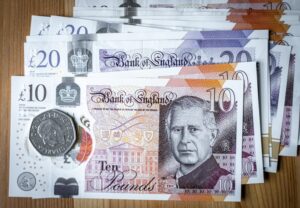
The British pound is on track for its sharpest monthly decline in almost two years, falling 3.6% against the US dollar in July as the UK currency faces pressure from both economic headwinds and shifting global sentiment.
Sterling’s slide is its worst monthly performance since September 2023, when it dropped 3.7%, and comes close to the 4% plunge seen in September 2022 in the wake of market turmoil sparked by Liz Truss’s mini-budget.
The US dollar, in contrast, has rallied throughout July—buoyed by renewed optimism following President Trump’s recent trade deals and a stream of positive US economic data. That combination helped drive a recovery in the dollar after a sluggish start to the year, prompting the Federal Reserve to hold interest rates steady this week, in line with market expectations.
Meanwhile, the Bank of England is expected to cut UK interest rates next week from 4.25% to 4%, a move that would widen the gap with US borrowing costs and further pressure the pound.
Sterling has also weakened slightly against the euro, dropping 0.7% this month to hover around €1.156.
Analysts at Oxford Economics said the outlook for the pound remains subdued, noting that fiscal concerns continue to weigh on sentiment. “We see sterling trading lower,” they told clients. “Fiscal concerns will remain in the foreground, undermining the ability of relatively elevated rates to sustain the pound.”
The pound’s recent decline adds to the uncertainty facing investors as the UK navigates slower growth, high government borrowing, and an uncertain global backdrop.
Read more:
Pound heads for worst month since September 2023 as dollar strengthens







